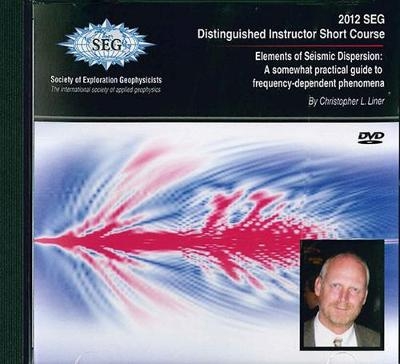
Elements of Seismic Dispersion
A Somewhat Practical Guide to Frequency-Dependent Phenomena
2012
Society of Exploration Geophysicists (Hersteller)
978-1-56080-306-5 (ISBN)
Society of Exploration Geophysicists (Hersteller)
978-1-56080-306-5 (ISBN)
- Keine Verlagsinformationen verfügbar
- Artikel merken
Provides a survey of selected frequency-dependent phenomena routinely encountered in reflection-seismic data. The classical meaning of the word dispersion is frequency-dependent velocity; this course takes a more general definition that includes wave speed, interference, attenuation, anisotropy, reflection characteristics, and other aspects.
This is a recording of the 2012 Distinguished Instructor Short Course (DISC) by Christopher L. Liner. The classical meaning of the word dispersion is frequency-dependent velocity. Here we take a more general definition that includes not only wave speed but also interference, attenuation, anisotropy, reflection characteristics, and other aspects of seismic waves that show frequency dependence. At first impression, the topic seems self-evident: of course everything is frequency dependent. Much of classical seismology and wave theory is nondispersive: the theory of P- and S-waves, Rayleigh waves in a half-space, geometric spreading, reflection and transmission coefficients, head waves, and so forth. Yet when we look at real data, strong dispersion abounds. This course is a survey of selected frequency-dependent phenomena that routinely are encountered in reflection-seismic data. Catalog #235A is the accompanying DISC book.
This is a recording of the 2012 Distinguished Instructor Short Course (DISC) by Christopher L. Liner. The classical meaning of the word dispersion is frequency-dependent velocity. Here we take a more general definition that includes not only wave speed but also interference, attenuation, anisotropy, reflection characteristics, and other aspects of seismic waves that show frequency dependence. At first impression, the topic seems self-evident: of course everything is frequency dependent. Much of classical seismology and wave theory is nondispersive: the theory of P- and S-waves, Rayleigh waves in a half-space, geometric spreading, reflection and transmission coefficients, head waves, and so forth. Yet when we look at real data, strong dispersion abounds. This course is a survey of selected frequency-dependent phenomena that routinely are encountered in reflection-seismic data. Catalog #235A is the accompanying DISC book.
| Erscheint lt. Verlag | 30.12.2012 |
|---|---|
| Verlagsort | Tulsa |
| Sprache | englisch |
| Maße | 127 x 140 mm |
| Themenwelt | Naturwissenschaften ► Geowissenschaften ► Geologie |
| Naturwissenschaften ► Geowissenschaften ► Geophysik | |
| ISBN-10 | 1-56080-306-1 / 1560803061 |
| ISBN-13 | 978-1-56080-306-5 / 9781560803065 |
| Zustand | Neuware |
| Haben Sie eine Frage zum Produkt? |